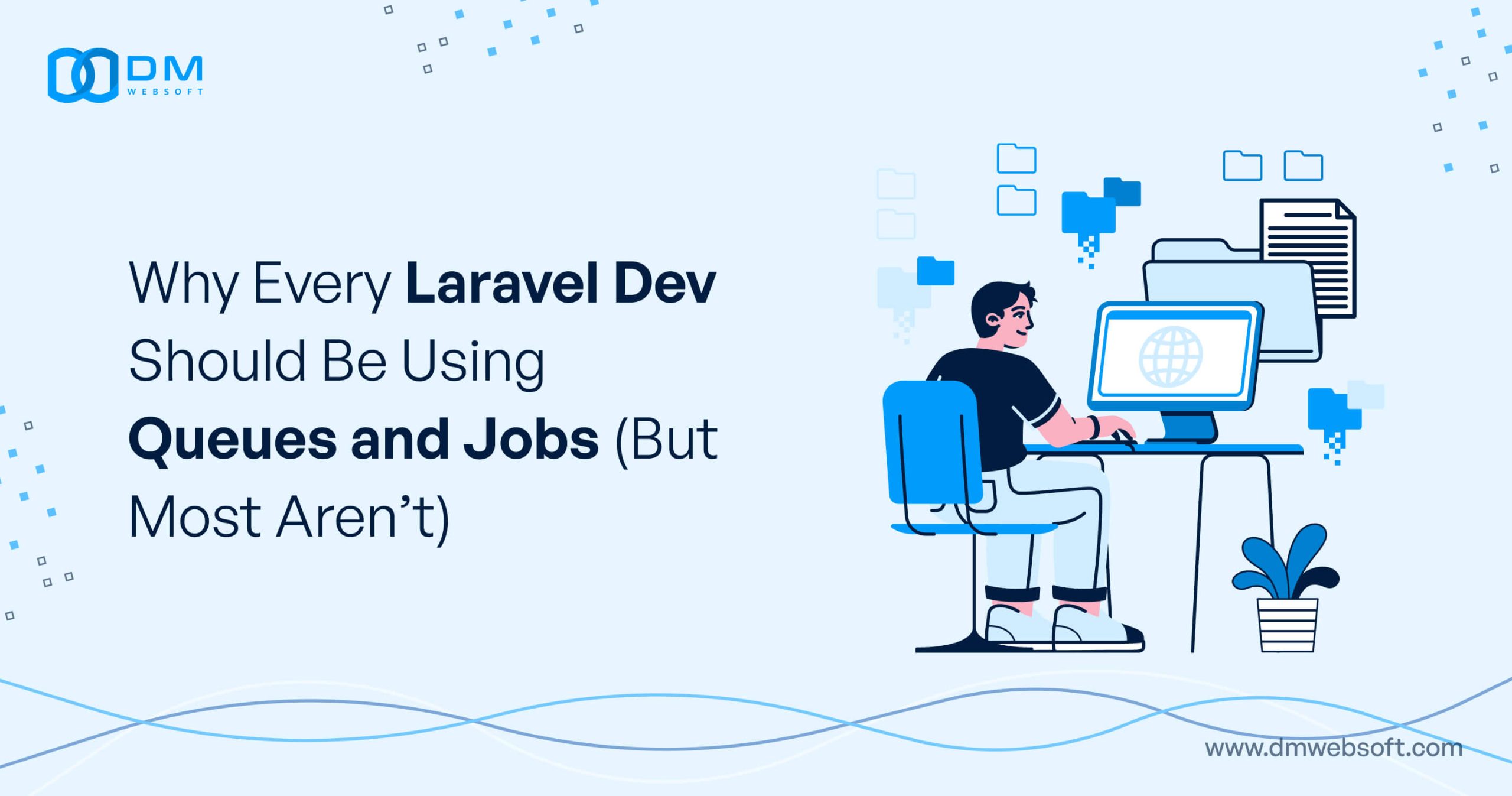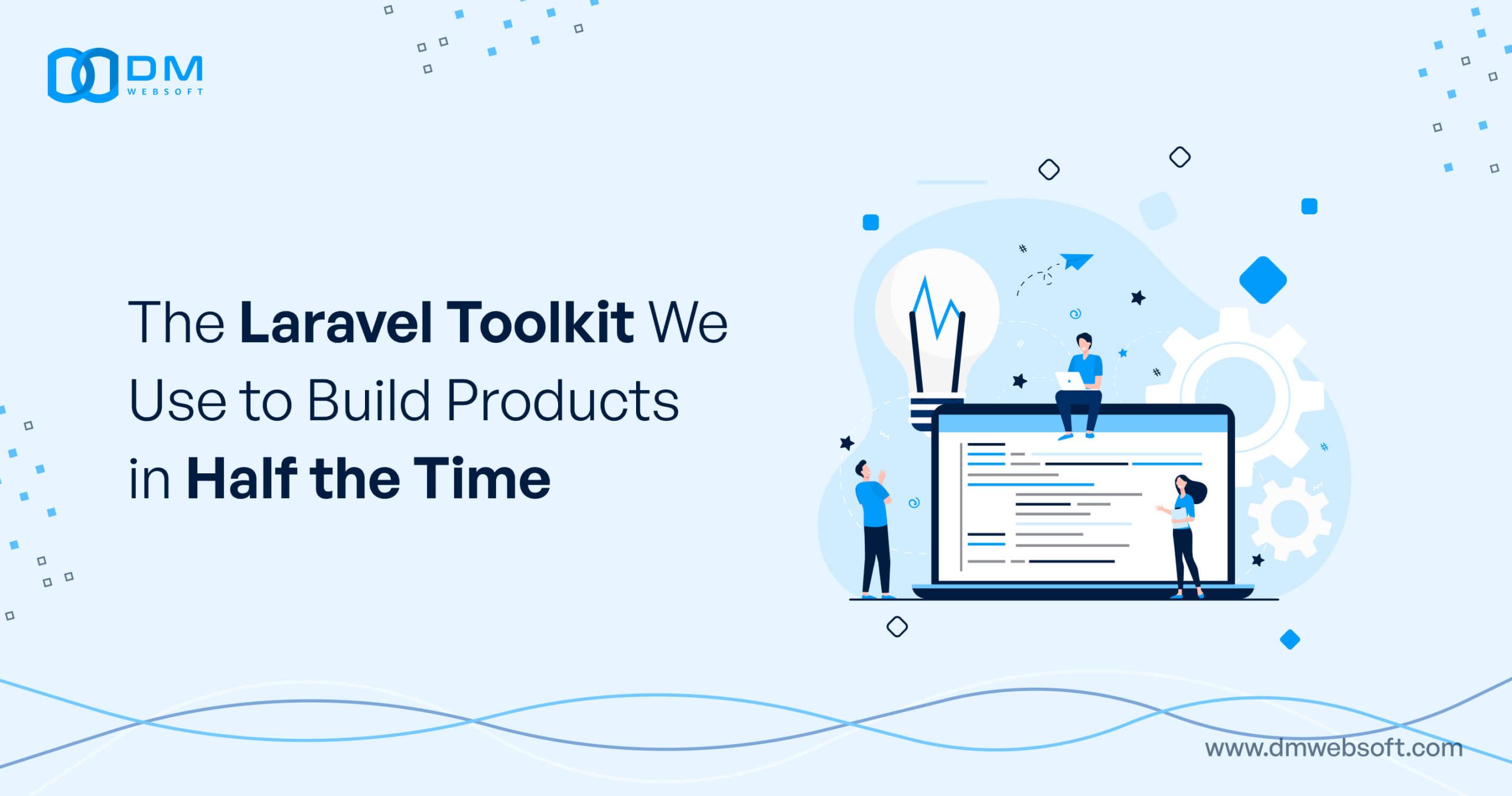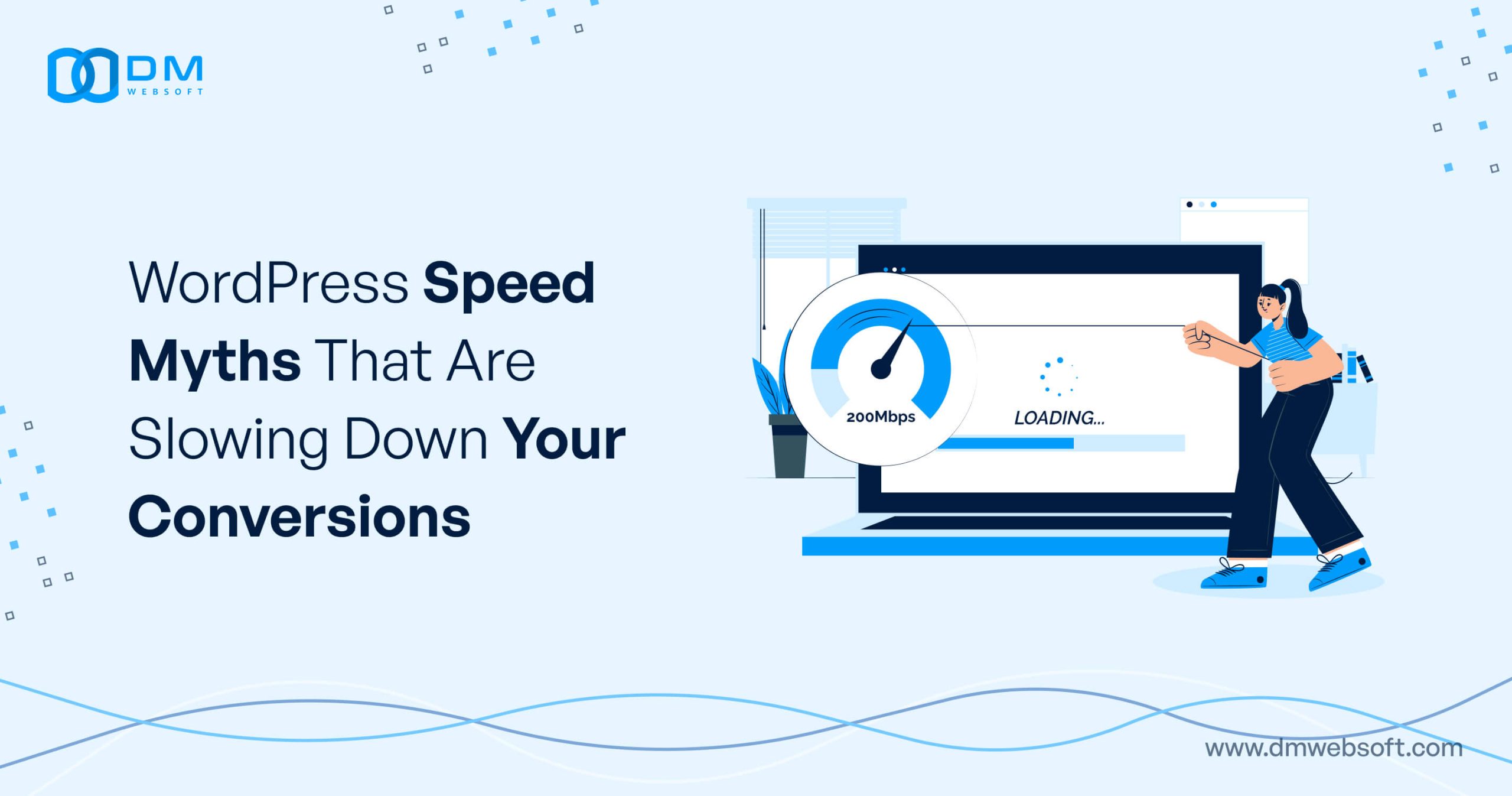DM WebSoft LLP exceeded our expectations! Their seasoned team of experts delivered a website that perfectly captures our brand essence. Their 15+ years of experience truly shine through in their exceptional web development skills.
No Code? No Problem. Build an MVP Without Writing a Single Line of Code

TABLE OF CONTENT
Introduction: Why No-Code is the Best Approach for MVP Development
Key Steps to Building an MVP with No-Code
Top No-Code Platforms for MVP Development
Overcoming Common Challenges in No-Code MVP Development
When to Transition from No-Code to Custom Development
How DM WebSoft LLP Helps Businesses Build Scalable MVPs with No-Code
The Future of No-Code: How It’s Reshaping Product Development
Conclusion
Get in Touch
Introduction: Why No-Code is the Best Approach for MVP Development
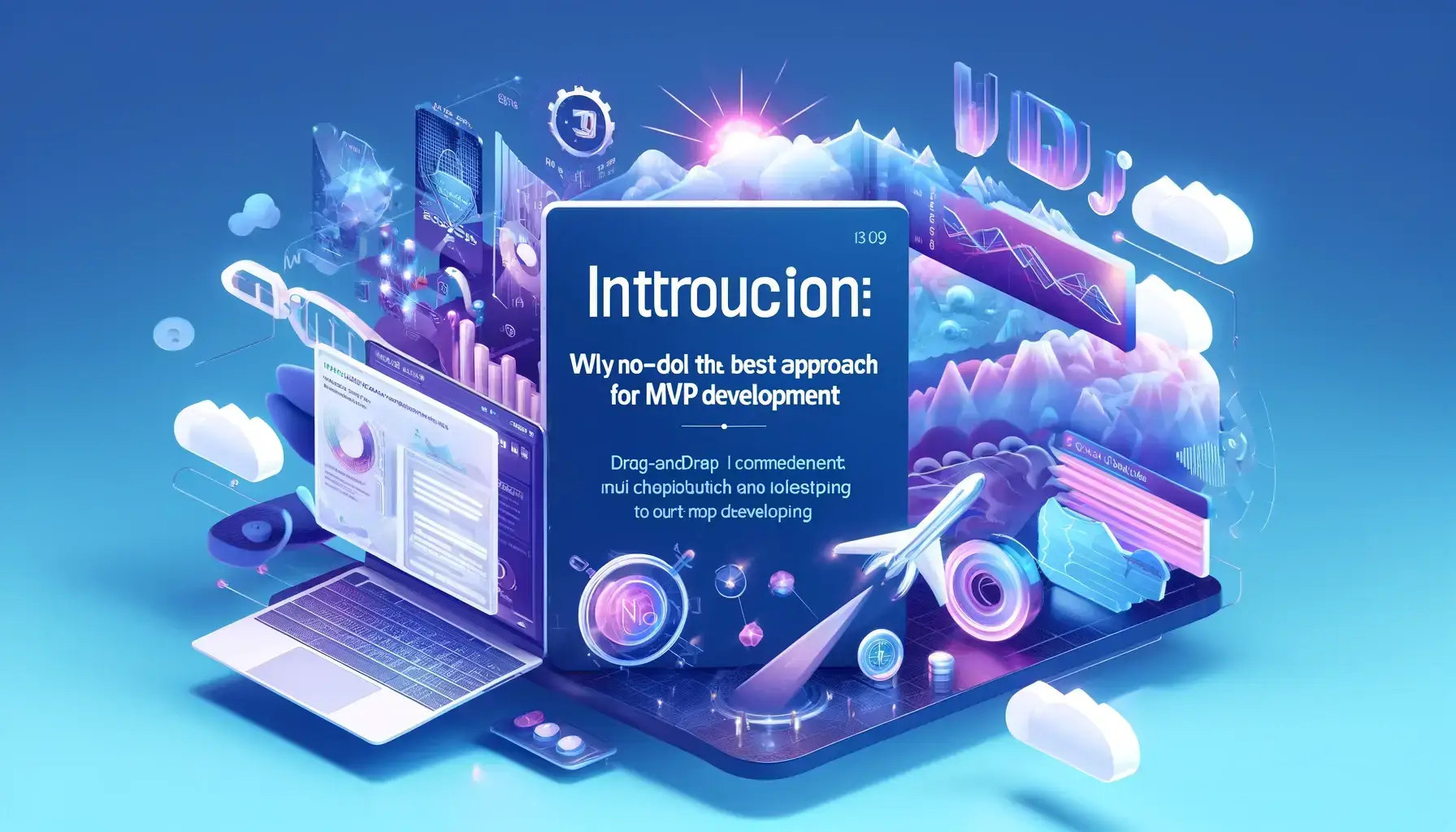
Launching a new product concept to market usually involves challenges, ranging from exorbitant development expenses to extended production cycles. Historically, developing a Minimum Viable Product (MVP) involved recruiting software engineers, UX designers, and backend developers, which made the process both costly and time-consuming.
This has all changed with the emergence of no-code development, allowing companies to develop fully functional digital products without coding a single line. No-code solutions offer drag-and-drop editors, pre-made templates, and automation features that enable entrepreneurs and startups to develop prototypes, experiment, and refine their ideas at an unprecedented pace.
One of the most significant reasons why no-code is particularly suited for building MVPs is cost-effectiveness. Employing a development team for even a simple application costs thousands of dollars, frequently even before checking if the product will have market traction. No-code takes away this cost by providing inexpensive, scalable platforms with no need for technical skill. Rather than taking months of development time, companies can put out an MVP in days or weeks, compressing time-to-market significantly and enabling early customer feedback and refinement.
Speed is another significant benefit. In conventional development, creating an MVP involves coding thousands of lines of code, fixing bugs, and dealing with infrastructure such as databases and servers. No-code platforms, however, have automation, visual workflows, and pre-built integrations already included, enabling companies to deploy and test their concepts quickly. Platforms such as Bubble, Webflow, and Adalo allow one to create fully functional web and mobile applications in a fraction of the time it would take using traditional methods.
Scalability and flexibility are also major reasons why no-code is picking up pace. The majority of startups worry that using no-code for their MVP will limit future growth, but modern no-code platforms now include API integrations, cloud hosting, and database customization to facilitate business growth.
Companies can start with a no-code MVP, validate product-market fit, and scale to an advanced development method when needed. This flexibility gives no-code a strong option for early-stage companies hoping to start out with low risk.
Security is another factor that renders no-code a viable choice. In contrast to conventional web development, where companies have to be responsible for their own security practices, most no-code solutions include integrated security features, automated backups, and data encryption, keeping MVPs secure and stable. This makes no-code development a sure bet, even for businesses handling user authentication, financial transactions, or confidential information.
By leveraging no-code, businesses save time, money, and get to test their ideas in the real world without spending a lot of money on software development. No-code solutions’ simplicity and efficacy make them ideal for startups looking to deliver their MVP promptly and effectively.
Key Steps to Building an MVP with No-Code
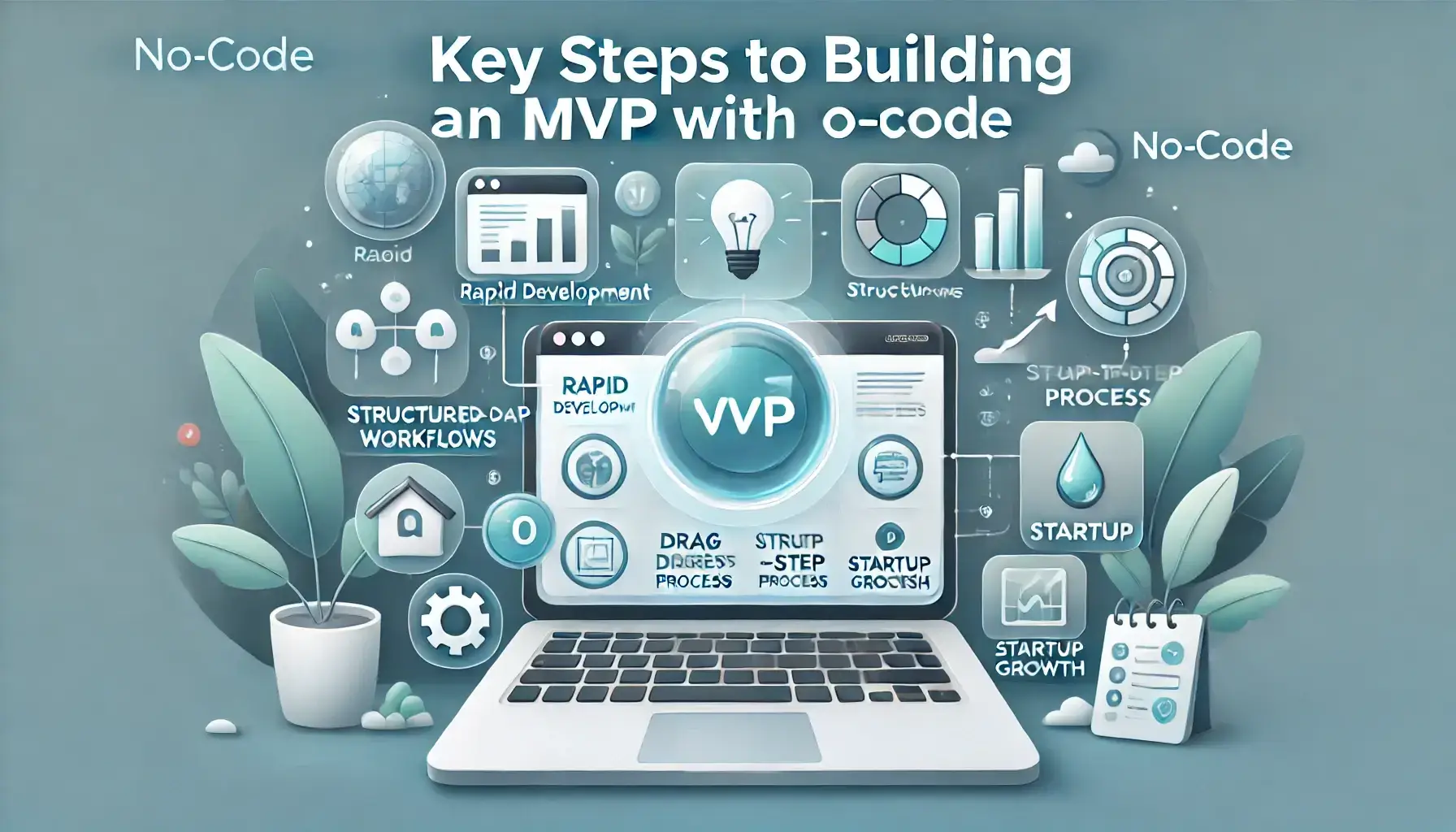
Constructing an MVP with no-code solutions enables companies to go from idea to implementation swiftly without the technical hurdles of conventional development. Nevertheless, deploying a successful MVP goes beyond choosing a no-code solution—it entails planning, user-centric design, and ongoing testing. Through a clearly defined process, the product is driven by user requirements but is scalable enough to develop further.
The very first step toward developing no-code MVPs is specifying the key problem and solution. Businesses need to specify the pain area that their product solves and the minimum set of features that are needed to prove market demand before development. An MVP, being different from a complete product, needs to concentrate on the bare essentials when it comes to functionality and stay away from complexity. This allows businesses to test and prove their idea with less effort and iterate on actual user feedback.
After the concept is set in place, the no-code platform selection is significant. Various platforms are designed to handle various types of use cases, like Bubble for web applications, Adalo for mobile applications, and Webflow for responsive websites. Companies need to compare platforms based on scalability, third-party tool integrations, automation, and cost. The optimal tool selection allows the MVP to not only function but also to be flexible enough to support further development.
Once the platform has been chosen, the second step is to craft a user-friendly interface. No-code platforms have drag-and-drop editors, custom UI components, and design templates that simplify it to create attractive applications. The MVP must be made simple, user-friendly, and mobile-friendly, so early adopters can utilize the product effortlessly without being confused. Most no-code platforms also have user experience testing capabilities, enabling companies to iterate on their design based on actual user behavior.
With the UI now in position, it’s time to deploy the database and workflows. No-code environments have native database administration features that allow users to store user information, manage transactions, and automate server-side operations without using SQL code. Companies need to concentrate on designing effective data structures, user interactions, and seamless app behavior. This phase is important in ensuring that the MVP works properly and offers a smooth user experience.
The last step before launching is implementing third-party services and automating. Most MVPs need functionality such as payment, notification through email, analysis, and CRM features, which can be quickly integrated using no-code solutions. Payments through Stripe, automation using Zapier, and monitoring users using Google Analytics enable businesses to boost the functionality of their MVP without programming.
Once the MVP is developed, the optimal method for testing its efficacy is to roll out a beta version to a limited group. Firms should take feedback from early adopters, solve pain points, and iterate quickly to improve the product. The beauty of no-code development is that it facilitates reacting to real-world feedback—it allows firms to iterate on the product before it goes to a mass audience.
Through this step-by-step approach, businesses can develop and deploy an MVP with no coding, reduced costs, reduced risk, and accelerated time to market.
Top No-Code Platforms for MVP Development
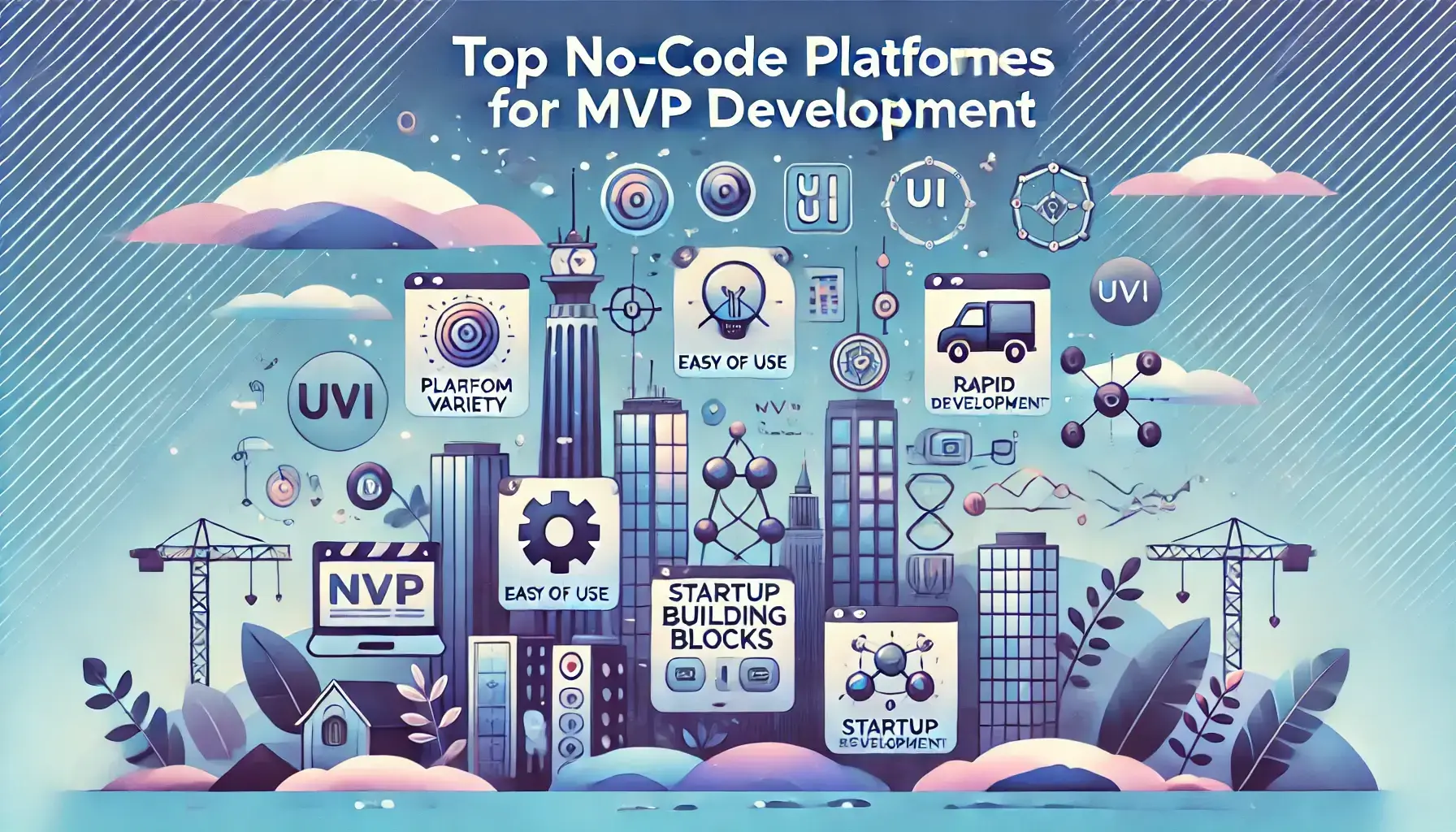
Selecting the proper no-code platform is an important choice when developing an MVP. All platforms provide various features, functionality, and scalability features, so choosing one that suits your business requirements is essential. Whether you’re developing a web application, mobile app, automation workflow, or e-commerce site, the proper no-code tool will enable you to get to market faster while minimizing cost.
For companies interested in creating web applications, Bubble is among the most capable no-code platforms on the market. It enables users to create complete, database-powered web applications with a visual drag-and-drop editor. Using Bubble, companies can create anything from social networks and marketplaces to SaaS applications, including custom workflows and API connections. The platform also enables user authentication, payment gateways, and third-party integrations, making it perfect for MVPs that need complex features without writing code.
For mobile app development, platforms like Adalo and Thunkable provide easy-to-use interfaces for building native mobile applications. Adalo is best suited for businesses looking to launch interactive mobile apps with built-in database management, push notifications, and app store publishing. On the other hand, Thunkable allows for more customization and flexibility, making it great for startups that need a fully functional mobile experience without coding.
For startups that require workflow automation and integrations, Make (Integromat) and Zapier provide smooth automation across various software tools. These services enable companies to integrate apps, automate workflows, and optimize operations without manual intervention. For instance, an MVP with Webflow for its website, Stripe for payments, and Airtable for data management can leverage Make or Zapier to automate workflows, providing efficiency without extra development.
For marketplaces and e-commerce, pre-built solutions offered by platforms such as Shopify and Sharetribe enable businesses to launch online stores and service-based platforms quickly. Shopify is suited for direct-to-consumer (DTC) brands with straightforward product management, payment processing, and marketing tools. Sharetribe is intended for creating multi-vendor marketplaces, which allow businesses to create peer-to-peer platforms like Airbnb or Etsy without writing any code.
All of these platforms offer scalability, security, and customization capabilities, which are ideal for developing MVPs at an early stage. The most important thing is choosing a platform that fits your product needs, your budget, and your future scalability aspirations. By using the correct no-code platforms, companies can validate their ideas, deploy quickly, and iterate on real user feedback to set themselves up for long-term growth.
Overcoming Common Challenges in No-Code MVP Development
When to Transition from No-Code to Custom Development
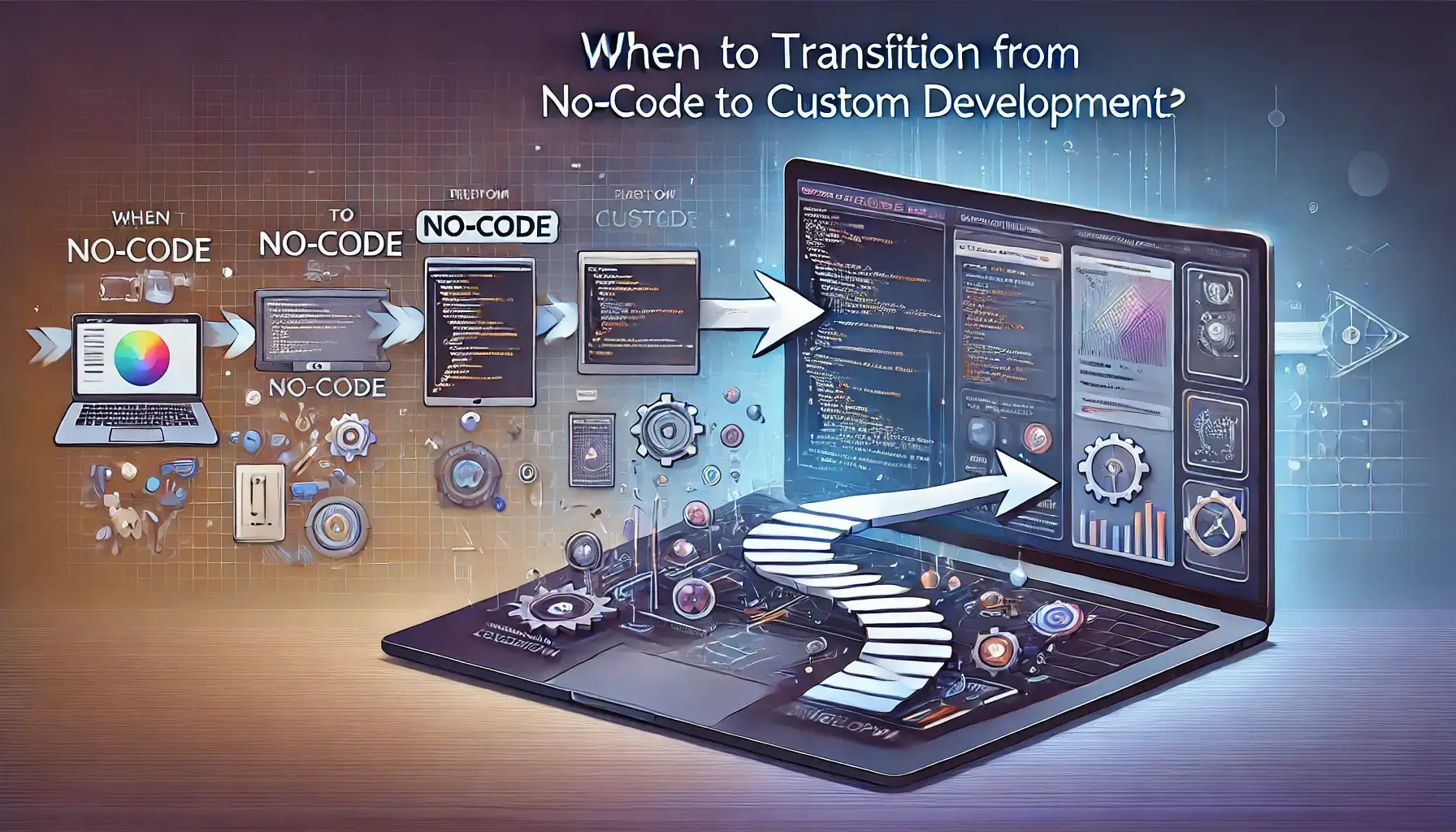
No-code solutions are a great starting point for MVP launches, but as companies expand, there will be a point where they will need to shift to custom development. No-code is perfect for quick prototyping, early validation, and first-market testing, but some business needs eventually require more flexibility, customization, and scalability that no-code solutions might not be able to provide. Knowing when to shift from no-code to traditional development is critical to long-term business success.
One of the major signs that a company requires custom development is when it exceeds the capabilities of a no-code platform. As much as no-code solutions come with pre-fabricated elements, some companies later need to implement custom workflows, sophisticated backend logic, or intensive AI-driven automation that is not possible with no-code platforms efficiently. If companies are too reliant on workarounds, a large number of API integrations, or third-party automation providers, then perhaps it is time to shift towards a fully customized application with better control over the functionality and performance.
Scalability issues are another prevalent cause for a move. No-code platforms work well for small to medium applications, but beyond a certain scale of user traffic, some aspects of server loading capacity, query optimization on databases, and multithreaded user sessions take a toll on performance. As soon as the MVP begins taking longer to load, crashing frequently, or having integration issues, a custom-solution approach—with high-performance-capable databases and scalable cloud setups—is required. Companies looking to scale users quickly or at the enterprise level should look to a long-term plan for phased adoption of custom development into their current no-code infrastructure.
Security and regulatory requirements also become factors in wanting to move out of no-code. Some companies deal in the finance, health, or enterprise SaaS segments, where it is necessary to meet strict regulation mandates that mandate very secure authentication, role-based access control, and custom-based encryption schemes. While most no-code solutions implement rudimentary security features, organizations that deal in sensitive customer data, financial systems, or artificial intelligence-based decision systems might find the need to build custom-based security infrastructure for meeting compliance criteria and avoiding exploitation.
Also, companies which want to offer a product that is differentiated on the basis of special features or proprietary technology would find no-code restrictive. No-code is adequate for many great companies that start with it before moving to customized software to craft innovative, market-leading solutions. If a firm needs sophisticated AI algorithms, machine learning models, or deep connections with external hardware or blockchain networks, a custom development full-stack approach is the only way to get the requisite level of functionality.
But shifting from no-code to custom development need not be sudden. Most companies follow a hybrid strategy, retaining some no-code aspects while introducing custom-built features in a phased manner. This is done without causing any disruption to current users. For instance, a startup might retain no-code for frontend development and automation but shift backend processes to a custom-built framework.
We facilitate companies through this transition at DM WebSoft LLP by providing scalable and affordable development options. Be it scaling an MVP, implementing AI features, or enhancing system architecture, our expertise provides seamless transition from no-code to custom development without affecting uptime or performance.
Identifying the appropriate moment for moving away from no-code and towards custom development enables businesses to scale cost-effectively with innovation, performance, and competitiveness.
How DM WebSoft LLP Helps Businesses Build Scalable MVPs with No-Code
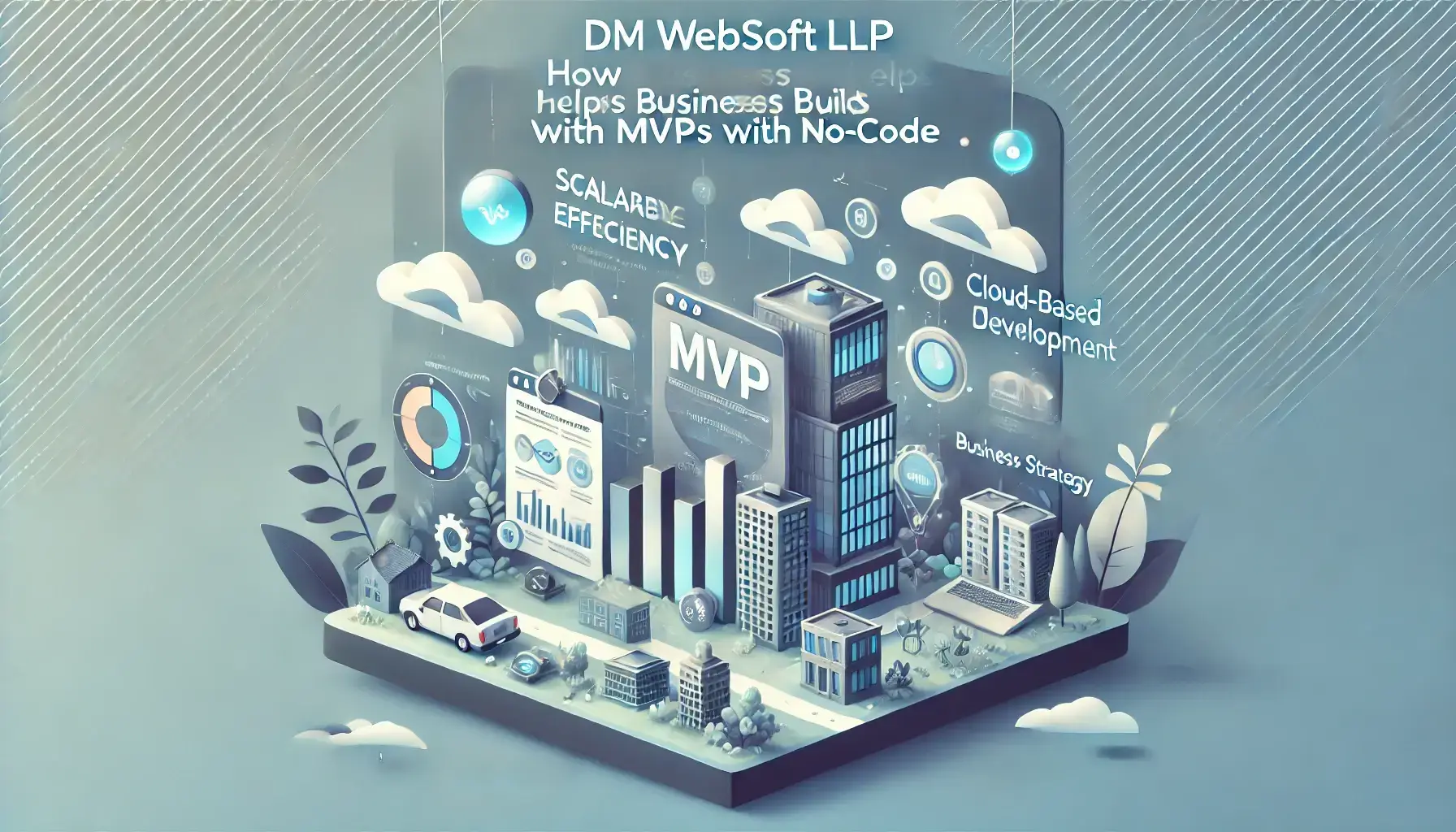
Launching an MVP successfully takes more than choosing the appropriate no-code platform—it takes a strategic process, professional expertise, and scalable deployment. At DM WebSoft LLP, we are experts at assisting companies in turning their ideas into reality with no-code technology, allowing them to launch, iterate, and scale effectively without the technical overhead of conventional development.
One of the most significant challenges companies have in applying no-code to MVP development is understanding how to organize their product roadmap. Though no-code platforms offer strong capabilities, many start-ups are beset with difficulties in selecting the most appropriate tools, creating ideal workflows, and optimizing for long-term scale. Our team at DM WebSoft LLP closely collaborates with customers to reach a well-defined MVP strategy, keeping them on course to finalize the key features, optimize user interaction, and execute automation procedures for maximizing efficiency.
Other than MVP development, optimization and security are among the primary concerns. Startups tend to inadvertently develop slow workflows, redundant automation, or poorly organized databases, slowing their application down as it grows. We optimize all no-code projects for speed, data consistency, and seamless user experience to mitigate potential bottlenecks that can occur with increasing traffic. Our third-party service, API integration, and workflow automation capabilities enable businesses to connect their no-code apps with outside tools seamlessly.
Another major aspect that DM WebSoft LLP helps businesses manage is scalability. While no-code solutions are wonderful for MVP releases, some projects inevitably require low-code improvements or bespoke solutions to meet the needs of the future. We provide a hybrid development approach, which means businesses can transition their applications out of no-code limitations without having to rebuild the system. Whether it’s implementing AI-powered automation, enhancing backend performance, or developing custom plugins, our specialists make businesses competitive and future-proof.
We also help companies with SEO optimization, user analytics, and marketing automation to drive traffic and engagement after launch. An MVP is as good as it gets only when it can get users and keep them, and our no-code solutions are meant to optimize for conversions, improve customer experience, and deliver valuable user insights to inform subsequent versions.
At DM WebSoft LLP, our goal is to make no-code development as effortless and scalable as possible. If you are a startup launching an MVP, an enterprise automating internal processes, or an e-commerce business expanding operations, our expertise ensures a smooth, cost-effective, and streamlined product launch. Contact us today to learn how our no-code solutions can help you build a high-performance, scalable MVP without writing a single line of code.
The Future of No-Code: How It’s Reshaping Product Development

No-code revolution isn’t a fad—it’s a paradigm shift in how businesses build and deploy digital products. As technology evolves, no-code platforms are growing stronger, empowering startups, enterprises, and entrepreneurs to develop sophisticated applications without the need for conventional coding skills. No-code revolution is driving software development to become cheaper and more accessible, and it allows businesses to concentrate on innovation rather than technology complexities.
One of the biggest changes we’re seeing is the expansion of no-code into enterprise solutions. Initially, no-code was primarily used for MVPs and internal business tools, but today, companies are leveraging these platforms for large-scale applications, customer portals, and AI-driven automation. No-code platforms are continuously improving their scalability, security, and integration capabilities, making them viable for enterprise-level operations. As a result, organizations are turning more and more to a hybrid no-code/low-code approach that includes visual development with custom coding for maximum flexibility.
No-code AI-based solutions are also revolutionizing the future’s development. No-code platforms are more and more leveraging machine learning, natural language processing, and AI-based automation to help businesses create smart apps without data science skills. No-code solutions like Make (Integromat) and Zapier are assisting businesses in automating complex workflows, while platforms like Bubble and Adalo are introducing AI-powered capabilities that support dynamic data processing and tailored user experiences.
Another thrilling trend is the emergence of no-code in blockchain and Web3 development. Historically, developing decentralized applications (dApps) and smart contracts needed extensive technical knowledge, but today, no-code platforms are opening up blockchain to non-developers. Companies can leverage no-code blockchain solutions to develop NFT marketplaces, decentralized finance (DeFi) apps, and secure digital transactions without having to write intricate smart contract code.
No-code is also changing e-commerce, marketplace sites, and SaaS tools. Business owners can create complete web stores, subscription plans, and multi-vendor marketplaces without hiring developers. Sharetribe, Shopify, and Webflow are a few of the tools that offer pre-built templates, API connections, and automation tools, which allow businesses to expand web presence rapidly and with ease.
As no-code technology continues to evolve, it is evident that the future of software development will be marked by accessibility, automation, and integration with AI. Those companies which adopt no-code today will stand to gain advantage so that they can quickly prototype, iterate around customer feedback and grow without having the conventional hold-backs from software development. Here at DM WebSoft LLP, we stay ahead of these tendencies by enabling enterprises to leverage frontier no-code tech in building future-ready, scale-able applications. If you’re ready to bring your idea to market in the form of a product, we’re here to guide you through the next evolution of no-code innovation.
Conclusion
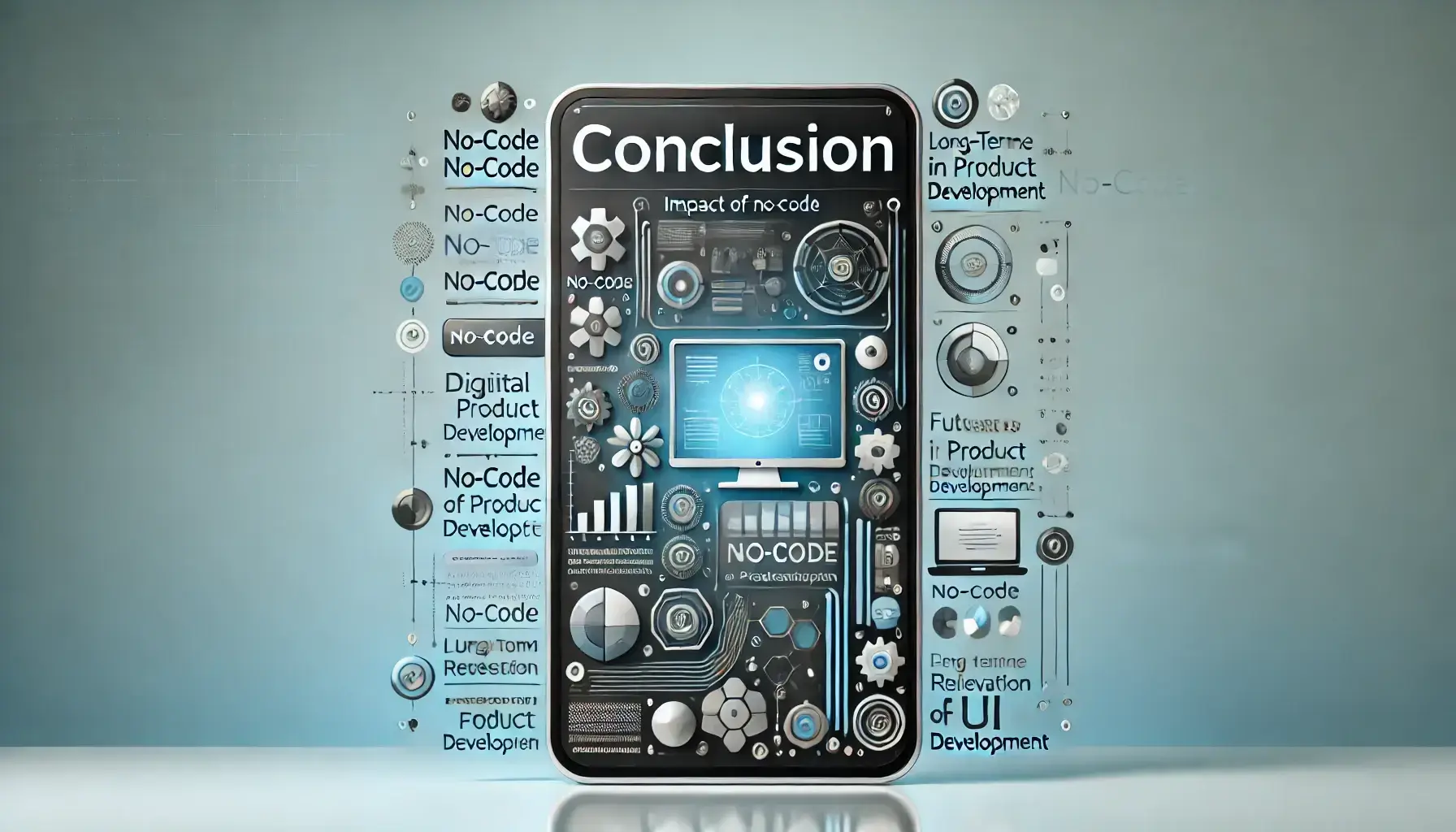
The advent of no-code development has completely transformed the way businesses make and bring digital products to life. By removing the traditional coding, no-code platforms provide businesspeople, startups, and small and medium-sized enterprises with the ability to build full-fledged MVPs quickly, within affordable prices, and with little technical expertise. No matter whether you’re creating a web app, mobile app, workflow automation, or e-commerce site, no-code environments give you the flexibility and horizontal scale required to test and refine your product on a winning scale.
One of the greatest strengths of no-code development is that it can potentially speed up time-to-market. Conventional software development takes months of planning, coding, and debugging, while no-code platforms allow companies to go live in weeks or even days. This enables startups to validate assumptions, collect real user feedback, and iterate on data-backed insights even before they spend money on full-fledged development.
Additionally, cost-effectiveness renders no-code a viable choice for low-budget businesses. Rather than spending on costly development teams, companies can utilize drag-and-drop builders, automation tools, and cloud hosting to create quality products at low expense. This allows entrepreneurs to invest in growth, customer acquisition, and market extension without spending much on technical development.
Security and scalability have also come a long way in the no-code environment. All of the top platforms available today provide enterprise-grade security, API connectivity, and cloud infrastructure, and are thus ready for even large applications.
Organizations beginning with no-code can then proceed to low-code or custom coding as their requirements change, making it possible for them to scale long-term.
At DM WebSoft LLP, we excel in assisting businesses in leveraging the power of no-code to create high-performing MVPs. Whether you’re planning to launch a SaaS product, an e-commerce website, or an internal business app, our services guarantee that your project goes on without a hitch and without any trouble. If you’re willing to turn your idea into reality without writing a single line of code, get in touch with us now and start your no-code journey.
Yes, with no-code platforms, you can create web and mobile applications without writing any code.
Popular platforms include Bubble for web apps, Adalo for mobile apps, Webflow for websites, and Make for automation.
Yes, many no-code platforms offer API integrations and cloud hosting, allowing you to scale efficiently.
Depending on complexity, a no-code MVP can be launched within a few days or weeks, significantly faster than traditional development.
Yes, DM WebSoft LLP specializes in no-code solutions, helping businesses launch MVPs quickly and cost-effectively.
Get Started Now !
What’s the Process ?
Request a Call
Consultation Meeting
Crafting a Tailored Proposal
Get Started Now !
Real Stories, Real Results. Discover What Our Clients Say

Working with DM WebSoft LLP was a game-changer for our business. Their technical prowess and innovative solutions transformed our online presence. A highly recommended web development agency with a stellar track record.

We are thrilled with the results DM WebSoft LLP delivered. Their deep understanding of web development coupled with years of expertise ensured a seamless and visually stunning website. True professionals!

In a digital age where first impressions matter, DM WebSoft LLP crafted a website that speaks volumes. The team’s attention to detail and commitment to quality set them apart. Thank you for making our vision a reality.

DM WebSoft LLP’s team demonstrated unparalleled expertise. Their ability to navigate complex technical challenges with ease is truly commendable. Choosing them for our web development needs was the best decision.

Exceptional service, unmatched skills! DM WebSoft LLP stands out as a leading web development agency. Their collaborative approach and commitment to excellence make them our go-to partner for all things web-related.

DM WebSoft LLP turned our ideas into a digital masterpiece. The seamless communication and timely delivery of our project showcased their professionalism. Highly impressed with the level of creativity and skill.

Our experience with DM WebSoft LLP was nothing short of amazing. From concept to execution, their team provided top-notch web development services. A reliable partner for businesses looking to elevate their online presence.

DM WebSoft LLP’s team of tech experts is second to none. Their wealth of experience reflects in the quality of their work. Our website not only meets but exceeds industry standards, thanks to their dedication.

Choosing DM WebSoft LLP was the best investment for our web development needs. Their team’s proficiency, coupled with a customer-centric approach, made the entire process smooth and enjoyable. A pleasure to work with!




